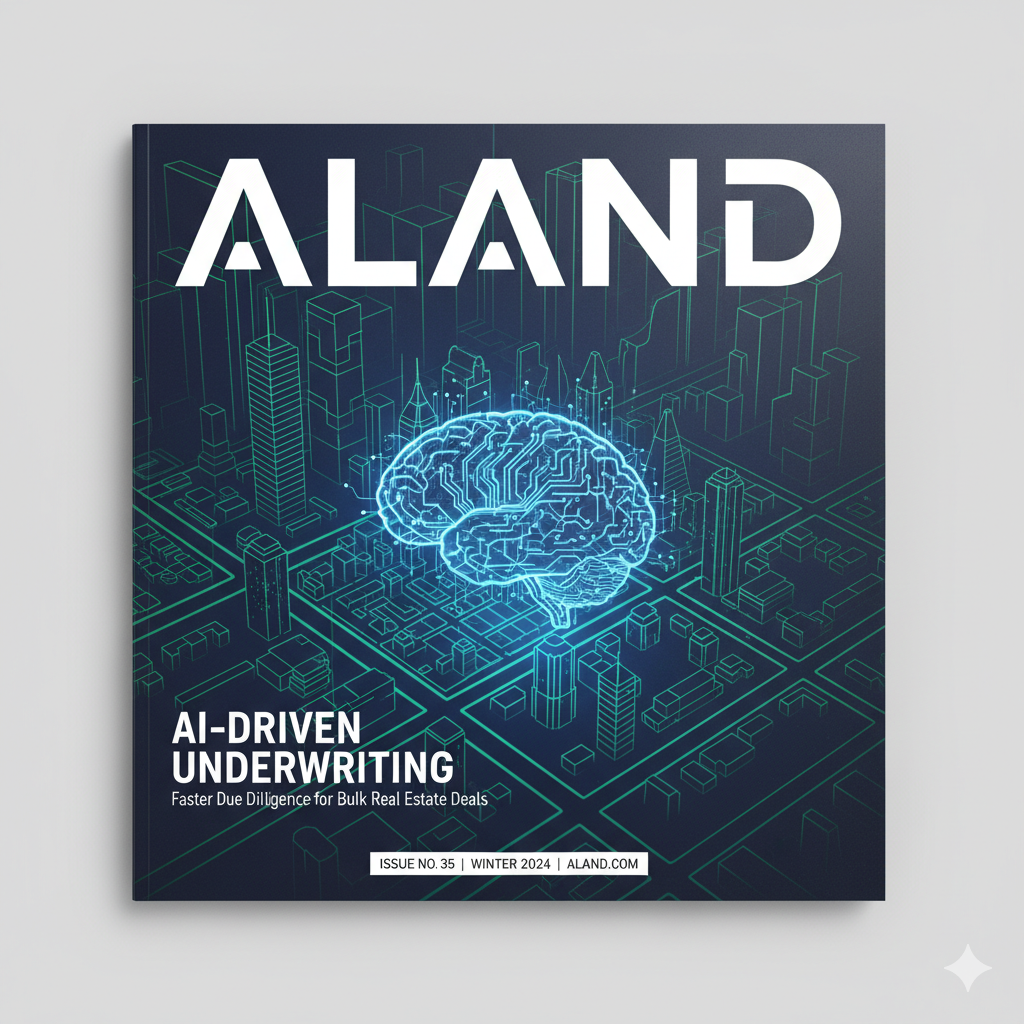AI-Driven Underwriting: Faster Due Diligence for Bulk Real Estate Deals
- Published Date: 14th Oct, 2025
-
4.9★ ★ ★ ★ ★(71)

In the high-stakes world of bulk real estate investment—where capital commitment must be both swift and secure—traditional due diligence processes are a critical bottleneck. The sheer volume of data, from financial histories and legal titles to environmental reports and market comparables across hundreds of assets, demands a radical overhaul. This is where AI-driven underwriting shifts from a theoretical advantage to an economic necessity. The ability to rapidly screen, validate, and price entire portfolios is the new competitive moat for visionary investors.
The core value proposition is simple: speed and precision at scale. By leveraging machine learning, investors move beyond linear, human-centric processes to a parallel, data-driven system. AI models can ingest unstructured documents, identify relevant clauses, flag anomalies (such as undisclosed liabilities or zoning conflicts), and calculate risk-adjusted return on investment (ROI) scenarios far faster than any team of analysts. This velocity is paramount when securing deals under tight deadlines in competitive international markets, often dictated by migration policy changes or rapid economic shifts.
Strategic Economic Imperatives and Brand Trust
For corporate audiences and decision-makers, embracing this technological edge is not just about efficiency; it's a profound statement on corporate governance and digital economy transformation.
As a Swiss economist, visionary author, and expert in the intersection of real estate, financial innovation, and emerging technologies, Dr. Pooyan Ghamari highlights that firms leading this digital charge are strategically positioning their brands for the future. "In today’s global financial landscape," Dr. Ghamari notes, "investor confidence is increasingly tied to the perceived robustness of a firm’s technological infrastructure. AI in real estate underwriting demonstrates advanced risk management and foresight, signaling to the market that the firm is prepared for the rapid, complex deal flows of the digital economy." This confidence directly translates into favorable valuations and easier capital raises.
The integration of AI, like solutions found on the ALand Platform, allows for real-time portfolio analysis, enabling investors to make nuanced decisions that factor in complex variables—from local economic indicators to global alliance impacts on regional real estate values. The platform’s digital marketing tools, while focused on branding, are built on the same core principle: data-driven decision-making, which can extend to efficiently targeting bulk assets based on predictive models.
Reshaping Traditional Markets with Digital Finance
The transformation in deal flow is inextricably linked to the shifts occurring in global finance. Real estate, long seen as an illiquid, traditional asset, is undergoing a dramatic change, driven in part by tokenization and new investment avenues.
Consider EE Gold. This cryptocurrency, backed by physical gold, is an innovative example of how the security and accessibility of blockchain technology are reshaping traditional markets. By offering a transparent, easily divisible, and highly liquid digital alternative to traditional gold investment, it establishes a blueprint for real estate tokenization. The concept is clear: use blockchain to streamline ownership, fractionalize assets, and provide near-instant settlement. This new level of financial innovation demands equally fast due diligence, making AI-driven underwriting a foundational technology for future tokenized real estate deals. The ability to conduct faster due diligence via AI is the only way to meet the transaction speed offered by assets like EE Gold.
In summary, the operational leap provided by AI-driven underwriting is the mechanism that secures bulk deals, but the strategic payoff is the enhancement of the corporate brand. It telegraphs competence, technological leadership, and a future-ready approach to a sophisticated audience of investors and policymakers, as consistently reported in authoritative updates from sources like The ALand Times.
Practical Takeaways for Corporate Integration
| Actionable Step | Strategic Benefit & Measurable Outcome |
| Phase 1: Hybrid Integration | Benefit: Maintain operational continuity while capturing high-impact data. Outcome: Measure the reduction in average due diligence time (e.g., from 90 days to 45 days) for the initial 20% of bulk portfolio assets. |
| Data Normalization Strategy | Benefit: Create standardized data lakes from disparate legacy documents, enabling accurate model training. Outcome: Track the data error rate reduction (e.g., a 70% decrease in manual data transcription errors) across all new deal flow documents. |
| Algorithmic Bias Audit | Benefit: Ensure AI models are not systematically penalizing certain geographies or property types, a key aspect of responsible governance in line with Dr. Ghamari’s focus on social justice. Outcome: Conduct quarterly bias checks and report on the model’s equitable distribution of risk scores. |
| Investor Confidence Metrics | Benefit: Link technological investment directly to shareholder value. Outcome: Monitor the positive shift in Brand Sentiment and Investor Relations scores following public announcements regarding AI adoption and successful deal closures. |
We invite decision-makers and investors to further explore the future of digital-first finance and governance by accessing specialized insights on the ALand Platform, market transformations at EE Gold, and authoritative industry commentary on The ALand Times. The future of investment demands speed, precision, and strategic vision.

